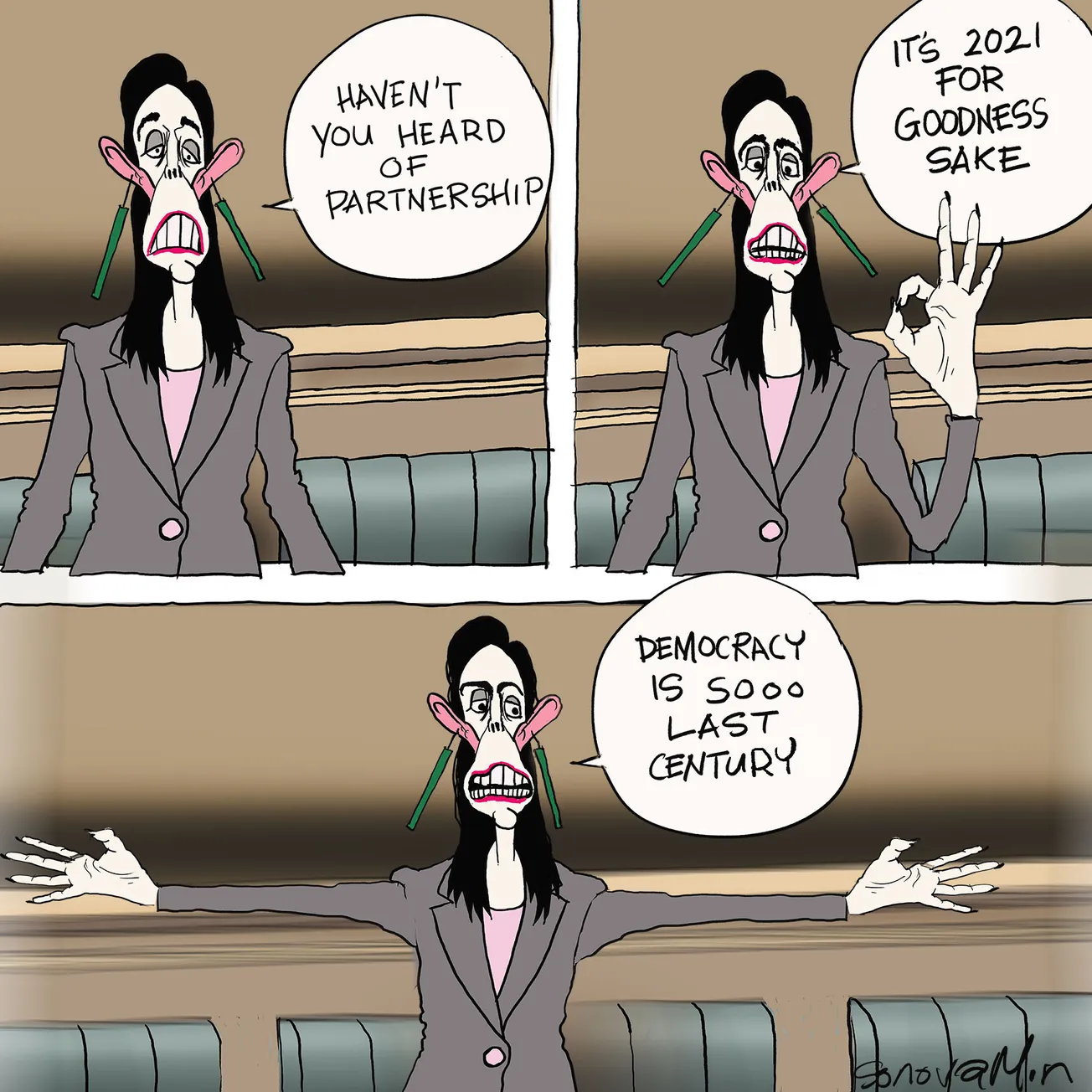The Big Lie at the heart of this country’s proposed new school History curriculum:
“It is clear that Maori did not cede their mana to the Crown, and that they signed in the belief that it would give them power to govern in partnership with the Governor”
The above quote is no more than latter-day revisionism with no basis in fact. The statement only gains traction among our radical academics, those who intend to impose their fantasy, their falsehood, on our young. Of no doubt whatsoever, even among their ilk, is that Maori collectively ceded to the Kawanatanga of Kuini Wikitoria and her representatives on February 6, 1840.
The false premise of the radical claim in the curriculum statement’s preamble, that Maori somehow retained equal or ultimate authority over government, has its seeds in the controversial conspiracy theory first mooted by historian Ruth Ross in the early 1970s and discussed in my previous article. It’s a theory that doesn’t hold water, and would certainly be emphatically rejected by the esteemed Maori academic, Sir Apirana Ngata:
“How could such an organisation, as a Government, be established under Maori custom? There was without doubt Maori chieftainship, but it was limited in its scope to its sub-tribe, and even to only a family group, The Maori did not have authority or a government which could make laws to govern the whole of the Maori Race.”
The truth is that Henry Williams took pains to explain Kawanatanga, the concept and mechanism of Governorship and whence that authority ordained; what it would mean, and the implications of its acceptance over and over again to the assembled at Waitangi.
The truth is that those assembled understood both the concept and the implications clearly. Very clearly. When Williams encountered phrases and concepts unfamiliar to the Maori tongue, he took especial care to relate ‘the tenor’ of the content in a way those gathered would relate to; the Kawana was to be the chief of chiefs, the law-maker, and exerciser thereof for Maori and non-Maori alike. They were to be one people under the laws.
Ruth Ross and her radical revisionist disciples rely on slandering interpreter Williams in forwarding the case that somehow, for some reason, he (deliberately) misled the assembled at Waitangi. The man would very un-reverendly be angry at such a foul accusation.
Proof positive of Williams’s commitment both to Maori and to sincerity can be found in his response to Bishop Selwyn’s confidential letter to him from July 1847.
In the letter, Selwyn alerts Williams to New Zealand’s third governor, George Grey’s instructions to map the definitively tribally-owned areas of the country and declare the rest ‘wastelands’, open to seizure and re-sale by the Crown, essentially to buffer the colony’s failing finances. In his reply Williams is clearly ropeable, his depth of feeling obvious upon the realisation that the words he uttered on February 6, 1840 in respect of the individual chiefs’ rights over all their land and properties, would rightly be thrown back at him as worse than lies. They would portray him betraying Maori both in word and in spirit:
“Earl Grey’s despatch to his Excellency the Governor I have seen, and am truly grieved to find that the Queen of Great Britain can be thus dishonoured. I have always maintained to the aborigines that Her Majesty’s word was sacred and inviolable”…”I cannot be surprised at the very light estimate in which the missionaries are held who took such a prominent part in the explanations of this treaty between Her Majesty and the chiefs of New Zealand. That we may fall sacrifice may be desired, but there are further points for consideration: the extermination of the native race, with proportional numbers of British subjects who must fall with the aborigines in their struggle for freedom”…”I will not be accessory to such deception, but continue to stand upon the treaty alone.”
Selwyn’s private letter to Williams also asked him, by way of preparing what limited arse-covering could be constructed from the blatant theft of land-ownership rights – or what might be called in other circles ‘developing a diplomatic response’ to the alienated and aggrieved rightful owners:
“I hereby request you to inform me in writing what you informed the natives and how they understood it” [emphasis by Selwyn in original]
To which Williams replied:
“The natives to whom I explained the treaty understood the nature of the same, there can be no doubt.”
That Ruth Ross, nearly a century and half-again, could cast such wilful aspersion on Williams, even after reading that emotionally-charged, angry letter (she quotes selected parts of it in her 1972 screed), and pretend that Williams, the official interpreter to Hobson, might have intentionally misled the chiefs present at Waitangi on that day, definitely speaks to integrity: whether of Williams, or of her and her revisionist disciples. You be the judge.
Which brings us to the second part of the Big Lie:
“and that they signed in the belief that it would give them power to govern in partnership with the Governor”
This demonstrably false conclusion is now, thanks to Ardern, a mantra being repeated all over the country, in everything from school handouts and community newspapers to our mainstream media. Deliberately phrased to hand a key to the back-door of our democracy to our would-be domestic revolutionaries.
The gifting away of which key Ardern and her academic bedfellows imagine as a just and noble cause. It is not. It is anything but.
While inter-textual analysis and debate about what one word or another may be or could be, or some would wish to be interpreted as, after many decades of hindsight is meaningless. It’s debating how many angels could dance on the head of a pin. It’s navel-gazing: unless considered alongside the human agency exhibited by Te Tiriti’s actual signatories and their contemporaries, following the acceptance of Kawanatanga, and for this we have much evidence.
The most problematic ambiguity of the document had nothing to with failure to follow through with any alleged pledges of dual-governance in the months following the signing. It had to do with the ‘pre-emption’ clause relating to land purchase and sale, which created immediate problems for native and settler alike. And why wouldn’t it?
Just try explaining the concept and justification of ‘pre-emption’ and applying it to your own real estate. Maori, generally, accepted that land for sale must first be offered to the Governor and his agents. Failing which, as natural justice would suggest, they were free to offer the land to other prospective purchasers. The Governor disagreed: The Crown and only the Crown could legally purchase land.
Famously literate, thanks to more than two decades of missionary effort, many tribal leaders expressed their dissatisfaction with the unpleasant misunderstanding and wrote to very amenable new Governor Fitzroy to inform him of their displeasure. In fact “masses of letters” on the subject would fill to the gunwales the office of “Protector of Aborigines” to whom they were diverted.
Note these letters were appeals to authority, the only authority which existed: the Governor.
There was no dual-governance, there was no co-authority. To state, as in Ardern’s manifesto, Aotearoa New Zealand’s Histories, that Maori had a ‘belief’ that they would ‘govern in partnership’ is a fabrication.
Please share this article so that others can discover The BFD










